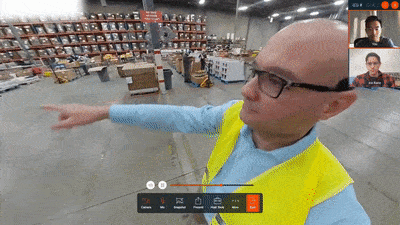Lean Manufacturing Process Improvement: Elevating Efficiency and Productivity
Lean manufacturing process improvement is about refining and optimizing every aspect of your manufacturing process to eliminate waste, enhance productivity, and ultimately deliver greater value to your customers. It's a continuous journey that involves every team member, from the shop floor to the executive suite. By examining real-world applications of lean process improvement, we can better understand its impact and how to leverage it effectively.
Streamlining Operations for Enhanced Efficiency
Lean process improvement starts with a deep dive into your operations to identify and eliminate waste. This involves adopting methodologies like Value Stream Mapping (VSM) to visualize your entire production process and pinpoint areas of inefficiency.
- Toyota, the birthplace of lean manufacturing, continuously applies VSM to reduce lead times and inventory levels. The result? A drastic reduction in the cost of goods sold, proving that efficiency directly correlates with profitability.
Quality as a Cornerstone of Lean Manufacturing
In lean manufacturing, quality improvement isn't just about reducing defects; it's about building processes that inherently produce high-quality outcomes. Tools like the Five Whys and Root Cause Analysis (RCA) are vital for diagnosing and addressing the underlying causes of issues.
- General Electric (GE) implemented Six Sigma alongside lean manufacturing principles to enhance its quality control. By doing so, GE saw a significant decrease in production defects, leading to an improvement in product quality and a reduction in waste.
Fostering a Culture of Continuous Improvement (Kaizen)
Kaizen, or continuous improvement, is the heartbeat of lean manufacturing. It encourages the ongoing search for ways to improve, involving employees at all levels in the process. This collaborative approach not only improves processes but also boosts employee morale and engagement.
- 3M has a long-standing commitment to Kaizen, leading to numerous product innovations and operational improvements. By fostering an environment where every employee feels empowered to suggest improvements, 3M has seen a substantial increase in productivity and innovation.
The Role of Technology in Lean Process Improvement
In today's digital age, technology plays a crucial role in enabling and accelerating lean process improvements. From advanced analytics to IoT (Internet of Things) sensors, technology provides the tools needed to gather data, analyze processes, and implement improvements more effectively.
Integrating Avatour for Process Improvement in Lean Manufacturing
Avatour offers a unique advantage in the realm of lean manufacturing process improvement. Its 360° capture and collaboration platform enables teams to conduct live, immersive reviews of manufacturing processes, regardless of their physical location. This unparalleled level of visibility allows for more effective identification of inefficiencies, fostering a more collaborative and informed approach to process improvement.

By utilizing Avatour, companies can:
- Conduct virtual Gemba walks, allowing global teams to observe and discuss processes in real-time.
- Enhance collaboration between cross-functional teams, breaking down silos and encouraging a unified approach to problem-solving.
- Rapidly share best practices across locations, ensuring that improvements are implemented consistently and effectively across the entire organization.
Lean manufacturing process improvement is an essential strategy for any organization aiming to remain competitive and responsive in a rapidly changing market. With the support of technologies like Avatour, companies can accelerate their lean journey, achieving significant improvements in efficiency, quality, and employee engagement.
Discover the foundations with Lean Manufacturing Tools, explore the broader Benefits of Lean Manufacturing, and dive into Lean Manufacturing Best Practices to fully embrace the lean philosophy.
Lean process improvement is not a destination but a journey. With the right tools, techniques, and technologies, your organization can navigate this journey more effectively, driving continuous improvement and sustainable success.








